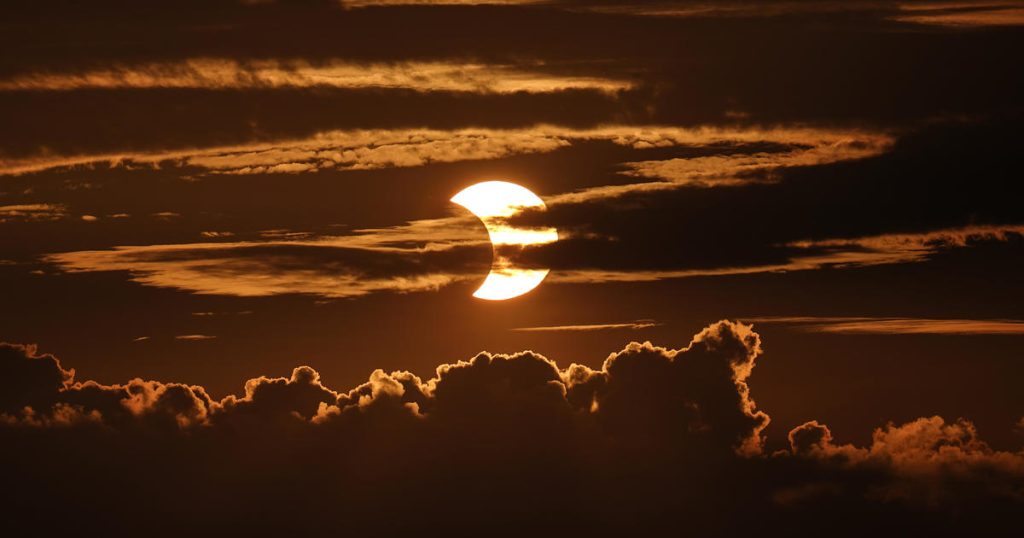America is preparing for the April 8 total solar eclipse, navigating maps to find the best location to watch within the path of totality. However, those hoping to witness the corona and a fully darkened midday sky may face the challenge of dealing with April weather patterns. Historical weather maps show that experiencing a cloud-free sky at this time of year is less than ideal, as roughly 70% of the Earth is covered in clouds at any given time. Additionally, an El Niño pattern, while quieter than usual, could increase the likelihood of cloudy, rainy weather in areas along the path of totality.
The path of totality for the upcoming eclipse is about 150 miles wide and stretches roughly 2,500 miles across America, from the Texas border to the northeastern towns of Maine. Those living or visiting along this path may find that venturing further south offers a higher chance of clear skies during the event. locations such as the Hill Country of Texas may provide a better viewing experience due to drier conditions. However, navigating stormy conditions and unpredictable weather patterns, particularly tornadoes, in areas like Texas, Oklahoma, and Arkansas might prove challenging.
In the Midwest, areas like Missouri, southern Illinois, and Indiana present opportunities for clear sky viewing, with better odds in Southern Illinois and Indiana for a cloud-free experience. However, the Chicago metro area may face challenges due to a higher likelihood of cloudy conditions. The influence of an El Niño weather pattern across the Midwest and Great Lakes regions could further complicate viewing experiences for those in these areas.
Along the Great Lakes and Pennsylvania, the presence of lake-effect clouds could potentially obstruct views of the eclipse. Areas like Erie, Pennsylvania, which averages only six clear days in April, and Pittsburgh, which averages four clear days, may face cloudy conditions. While warmer temperatures and a southerly breeze may help improve visibility in the Great Lakes region, historical data suggests a lower probability of clear skies in these areas.
In New England, locations such as Vermont, New Hampshire, and Maine may experience high levels of cloud cover, posing a challenge to eclipse watchers. Historical data indicates that northern New England faces some of the worst odds for clear skies during the event. Despite these challenges, the decrease in sunlight during totality could lead to a stabilization of the atmosphere and a decrease in cloud cover, providing some hope for clearer views.
For those unable to witness the upcoming eclipse due to cloudy conditions, another chance will arise in August 2045 when a total solar eclipse will stretch from northern California to Miami Beach. This event provides a future opportunity for eclipse enthusiasts to experience the phenomenon without cloud cover hindering their view. Ultimately, while weather patterns may play a significant role in eclipse viewing experiences, the unpredictability of nature adds an element of challenge and excitement to the event.















